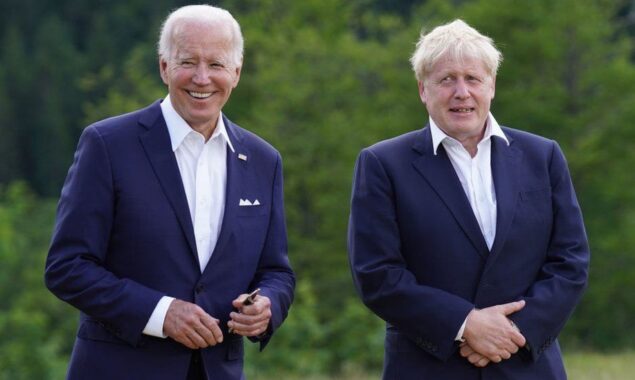Oil declines more than $1 as the G7 discusses the Iran nuclear agreement
Brent crude falls $1.42, or 1.3%, to $111.70 a barrel by 0010...

G7 leaders unveil $600bn plan to rival Belt and Road. (credits: Googe)
In a move perceived as a response to China’s Belt and Road initiative, G7 leaders have provided details on their plans to mobilise $600 billion in funding for the poor world.
A programme unveiled at the G7 summit in England last year is being relaunched by the Partnership for Global Infrastructure and Investment (PGII).
According to US Vice President Joe Biden, the proposal would produce benefits for all.
Critics claim that China’s multi-trillion dollar infrastructure programme burdens countries with excessive debt.
“To be crystal clear: This is not a charitable or aid effort “Regarding the G7’s PGII plan, Mr. Biden noted. It is an investment that will produce profits for all parties.
According to the US president, the programme will enable nations to “understand the actual benefits of working with democracies.”
According to the plan, the G7 leaders must generate $600 billion over a five-year period to start infrastructure projects in middle- and low-income nations.
Through grants, federal funds, and private investment, the US has pledged to generate $200 billion (£162 billion) of the total, and the EU has vowed an additional 300 billion euros (£257 billion).
The project will focus on combating climate change, enhancing global health, attaining gender equity, and creating digital infrastructure.
A few of the initiatives that are highlighted are a vaccine production plant in Senegal, a solar-powered project in Angola, and a 1,609 km submarine communications line that connects Singapore to France via Egypt and the Horn of Africa.
The proposal has been presented as a means of thwarting China’s vast Belt and Road Initiative (BRI). The BRI, which was introduced by the Chinese president Xi Jinping in 2013, offers finance to developing nations so they may build infrastructure including ports, roads, and bridges.
Although it has forged economic ties, it has also come under fire for being a source of “predatory loans” that compel debt-ridden nations to forfeit valuable assets if they can’t make their debt payments.
The latest project, according to European Commission President Ursula von der Leyen, aims to provide the world a “positive powerful investment drive to convince our partners in the developing world that they have a choice.”
At the G7 conference in Britain in 2021, the infrastructure plan was initially announced. The US-driven initiative, then known as Build Back Better World, was unsuccessful due to a lack of progress, and the project was rebranded to PGII before being revived at the 2022 summit.
Catch all the International News, World News, Breaking News Event and Latest News Updates on The BOL News
Download The BOL News App to get the Daily News Update & Follow us on Google News.